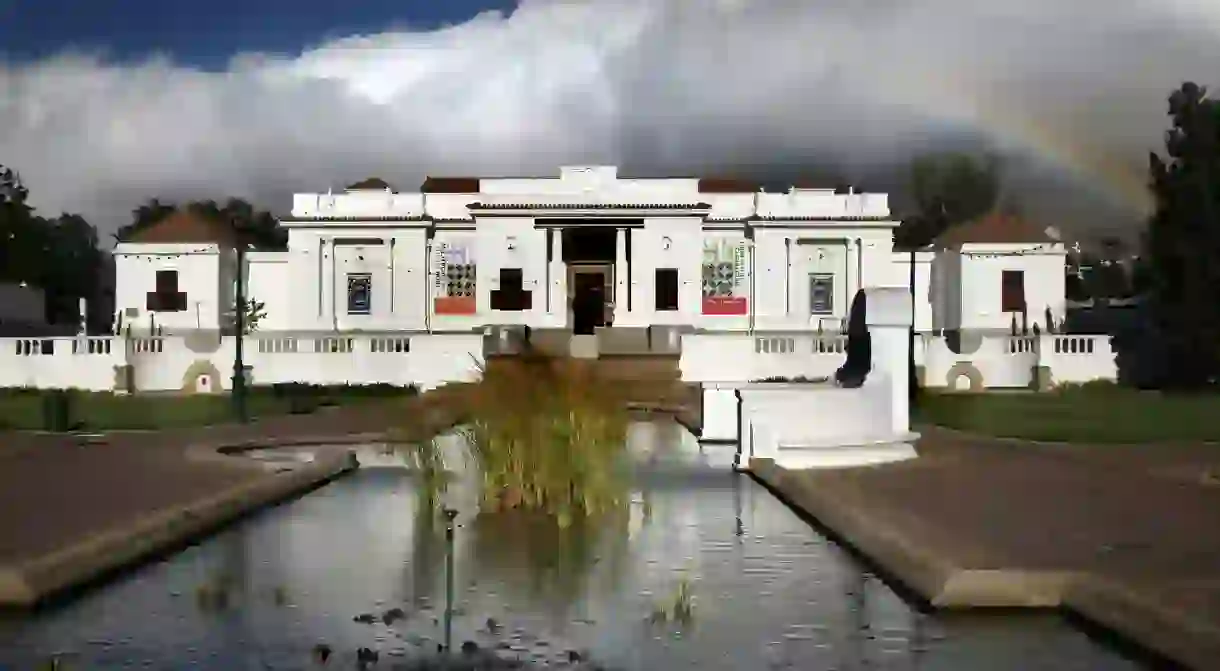5 Must-See Artworks At The South African National Gallery

The Iziko South African National Gallery is South Africa’s oldest and most prestigious art gallery. Founded in 1871, the gallery offers visitors unique insights into South Africa’s past and present through a wide range of historical and contemporary artwork. We take a look at the most iconic works currently on show at this Cape Town landmark.
Situated in the historical Company’s Garden, the SA National Gallery (SANG) has acquired a vast collection of African and international artwork including paintings, sculptures, photography, beadwork, textiles, and works on paper. Every few months, artworks from the permanent collection are selected by curators and displayed in the gallery as part of a temporary exhibition program. Additionally, visitors are treated to the work of established South African artists who exhibit at the gallery on a regular basis.
Butcher Boys (1985-6) by Jane Alexander Mixed media
Eerily life-like and frightening, the grey horned trio known as the Butcher Boys is renowned South African artist Jane Alexander’s most famous sculpture. Visitors to the gallery are greeted by and immediately drawn to the life-size humanoid figures perched on a wooden bench as if they were patrons who had sat down to rest. The Butcher Boys are cast from plaster and feature deep wounds, opaque eyes, and no mouths. They symbolize the racial discrimination and violence committed during apartheid South Africa. Additionally, the sculpture’s lack of genitalia and specific skin color can be perceived as a reference to humanity in general, and the good and evil present in all of us.

Chapungu – The Day Rhodes Fell (2015) by Sethembile Msezane Photographic print
In this striking photograph, artist Sethembile Msezane portrays the Zimbabwe bird — the national emblem of Zimbabwe — at the site where the historical removal of the statue of colonialist Cecil John Rhodes took place at the University of Cape Town on April 9, 2015. Sethembile, a Masters in Fine Art student from Johannesburg, interrogates issues of identity through the mind of a millennial South African black woman. Through performance art, she maps out how popular culture informs history and mythmaking, and ultimately addresses the absence of the black female body in memorialized public spaces. As pictured, Sethembile re-imagines various mythological and historical characters such as Chapungu. The Zimbabwe bird represents carved soapstone bird sculptures discovered at the ruined city of Great Zimbabwe, five of which were removed by colonialists in the late 19th century and sold to Cecil John Rhodes. Chapungu forms part of The Art of Disruptions exhibition on show at the SANG until October 23.

Make Your Home Your Castle (1995) by Lisa Brice Installation
Lisa Brice’s Make Your Home Your Castle reflects the dangers of life in modern South Africa. Her installation forms part of the exhibition Home Truths: Domestic Interior in South African Collections — a diverse multi-layered showcase of artworks ranging from historical paintings to contemporary pieces and installations. Lisa’s artwork demonstrates a South African home adorned with cozy furnishings and inscribed security questions that homeowners are forced to ask themselves before going to bed. The artwork represents the high crime rate and omnipresent risk of physical attacks and burglaries in South Africa. Simultaneously, it references the apartheid system that helped create the danger. The artwork was inspired by Lisa’s own harrowing experience in 1990 when she returned home to find her apartment burgled and her roommate who lay dying on the floor after being stabbed multiple times by the intruder. Lisa Brice was born in Cape Town in 1968, and graduated from the Michaelis School of Fine Art in 1990. She currently works between Cape Town, Trinidad and London. Home Truths is on show until October 23.

Christ Head (1952) by Alexis Preller Oil on wood
Alexis Preller (1911—1975) is one of South Africa’s foremost artists, best known for his alluring paintings of nature, African masks, and other African art. Born in Pretoria in 1911, Alexis was influenced by Vincent van Gogh and Paul Ganguin which led him to study at the Westminster School of Art, London and later at the Académie de la Grande Chaumière in Paris, where he graduated in 1937. His remarkable artwork Christ Head can be viewed in the exhibition, Studio: Celebrating the lives and work of South African artists, on show until September 30.

The Night of the Long Knives III (2013) by Athi-Patra Ruga Archival ink-jet print on Photorag Baryta
The Night of the Long Knives is one of several artworks from Athi-Patra Ruga’s art series titled The Future White Women of Azania Saga. The series is linked to the apartheid era’s fiction of Azania – a Southern African decolonialised utopia. Athi-Patra Ruga is a renowned contemporary artist born in Umtata, South Africa in 1984. He explores the border zones between fashion, performance and contemporary art, making work that exposes and subverts the body in relation to structure, ideology and politics. Athi-Patra’s version of Azania reflects a region of tropical colors, populated with characters whose identities are in a stage of transformation. The central figure is The Future White Woman who is undergoing a racial transformation among a cocoon of multi-colored balloons. See this fascinating artwork on display at the Studio exhibition.














